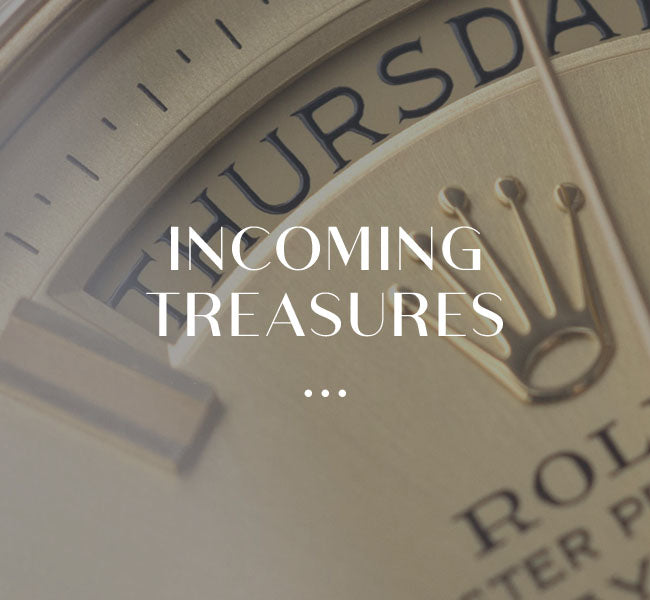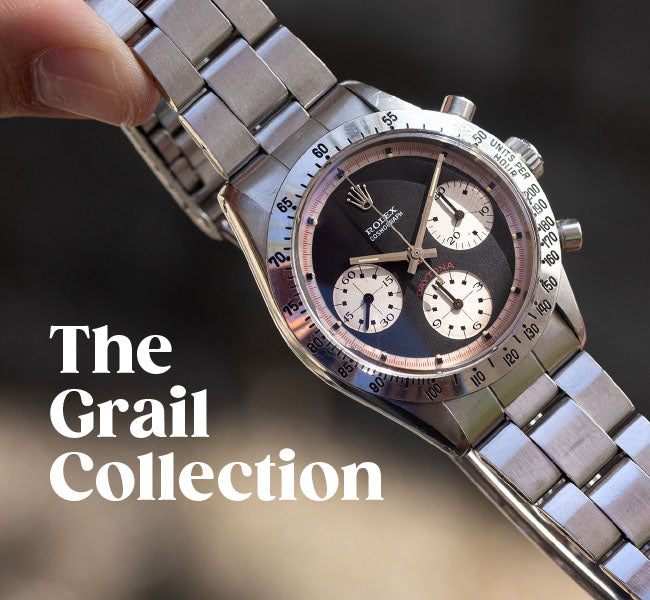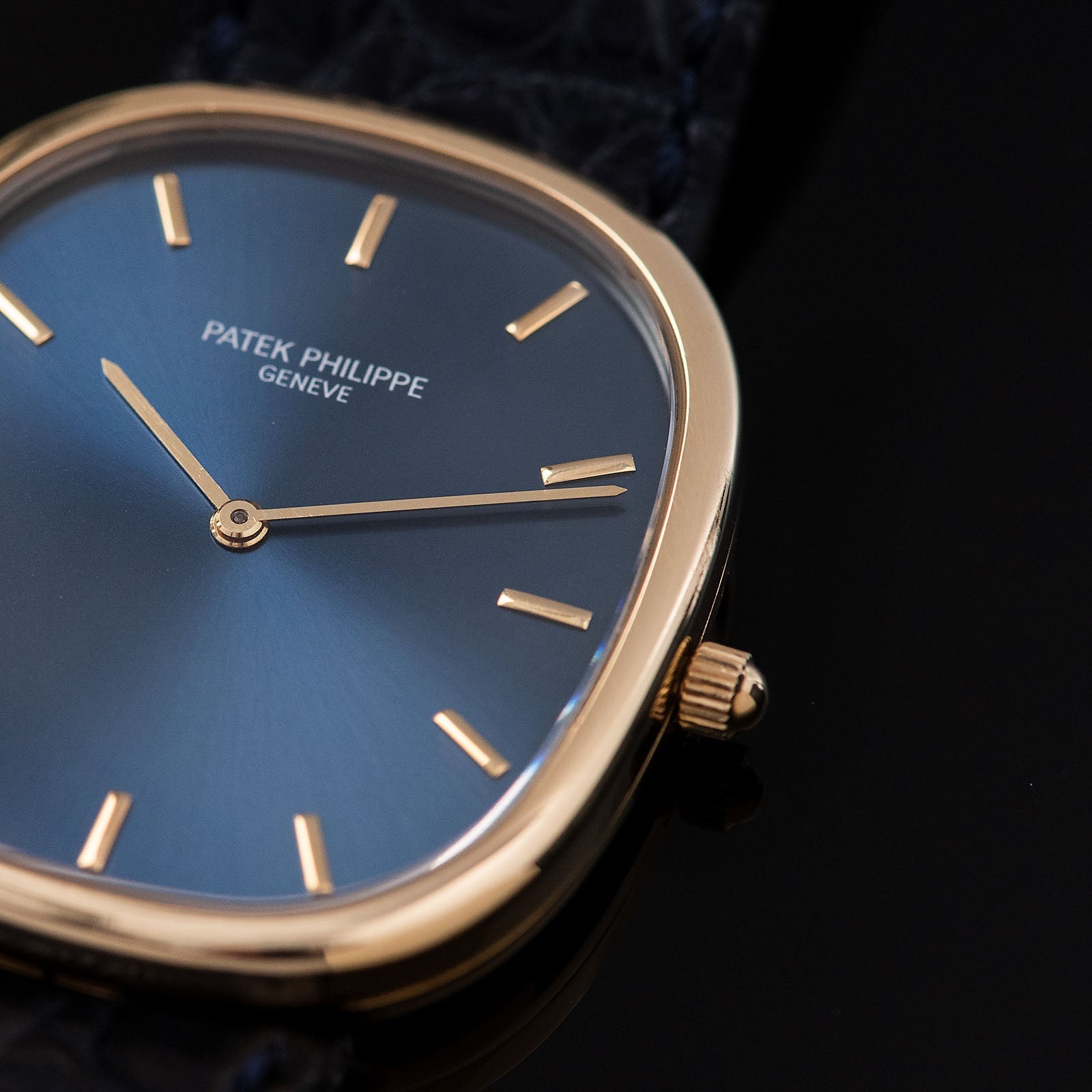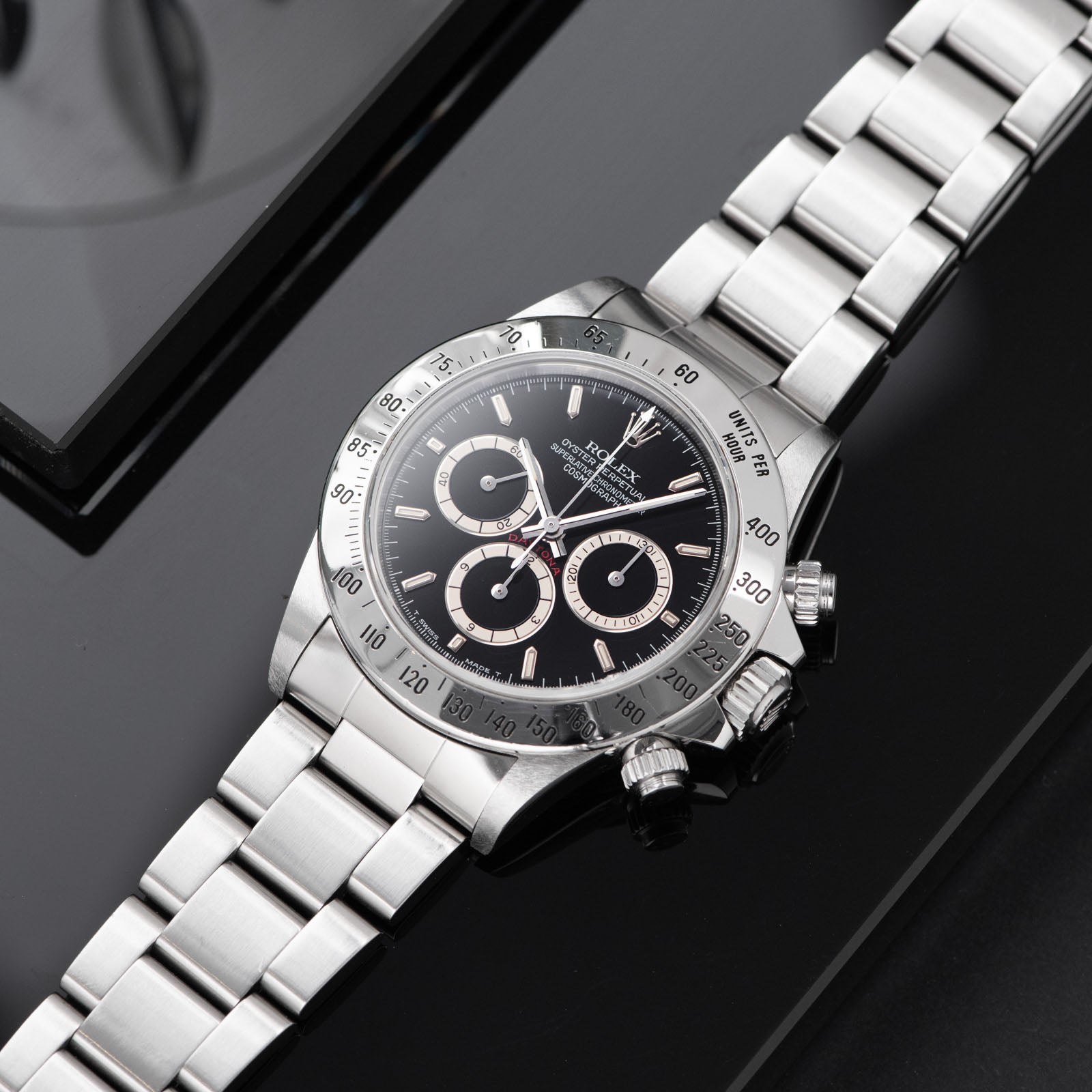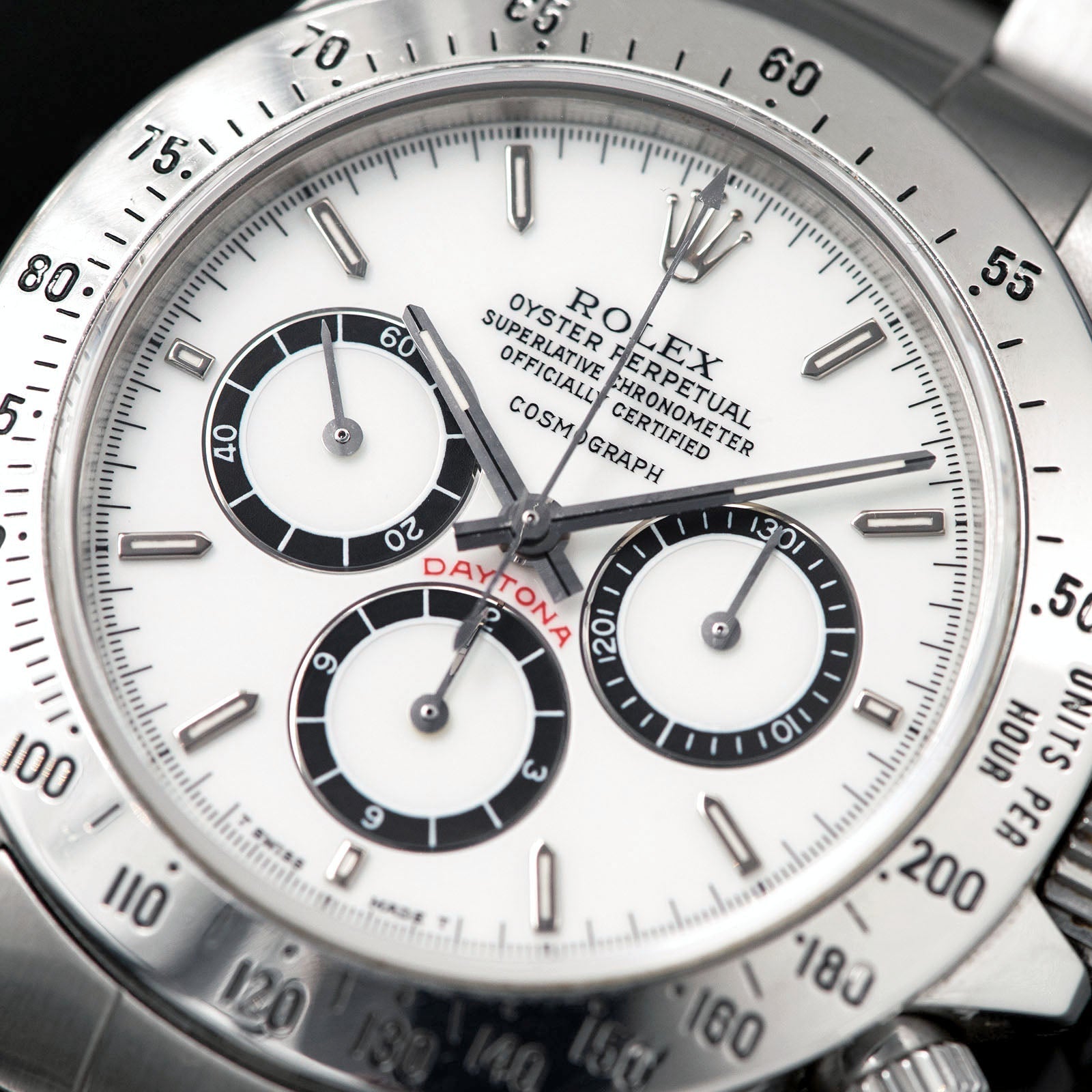
The Porcelain Dial Rolex 16520 Zenith Daytona

1988 was a benchmark year for Rolex. The Daytona had become something of a lame duck, with sales stalling to a virtual standstill it was a line that needed some new life breathing into it. And that’s exactly what happened with the launch of the 16520 in ’88. Gone was the 36mm case, with manually wound movement and plexi crystal and in its place was a new, 40mm case with crown guards, a sapphire crystal and an automatic movement. The automatic calibre was based on the Zenith El Primero, but was modified by Rolex and given the calibre reference 4030. Rolex received, in total, 350000 Zenith movements over the years and replaced half of the components and made 200 modifications to each and every one of them. The watch was a huge success and so began the Daytona phenomenon that is still very much alive today. Over the years, collectors, dealers and scholars have worked to identify the various iterations of the Zenith-era Rolex Daytonas. There are eight different dial versions in the steel watches alone and the topic could take over a series of articles. Today, however, we are taking a look at the very earliest of 16520 dials and one of the most coveted – the Porcelain Dial Rolex Zenith Daytona.


First Impressions
The very earliest 16520s were fitted with what we know refer to as ‘floating’ dials. This name comes from the fact that the word ‘COSMOGRAPH’ is detached from the other four lines of text on the upper half of the dial; it’s as if the word is ‘floating’ away. These dials are accepted in serial ranges from ‘R’ to ‘L6’. There were some of these dials, however, that floated in a second way – it was as if the text was floating above the surface of the dial and in some lights it was actually possible to see a slight shadow of the text on the dial surface below. This 3D effect was only on certain dials that collectors have named porcelain due to the milky finish and glossy effect.


These watches are also fitted with the first execution of bezel. The 200 bezel was used in 1988 and early 1999 and was graduated from 50 to 200. These bezels were similar to the bezels used on the manual-wind Daytonas, with the ‘UNITS PER HOUR’ text at three o’clock. Later versions of the bezel had this text at one o’clock and were graduated up to 400. Of course, as is always the way with Rolex, these bezels would be replaced at service and a later version would be installed on the watch. For collectors, however, originality is key and so a 200 bezel is essential on a Porcelain 16520.


Flair and Style
The porcelain dial has a certain flair, especially when examined up close. As with a number of early 16520 dials, the number 6 in the bottom hour register is upside down or inverted – hence the nickname ‘Inverted 6’ for early Zenith-ear dials. A louped-look at the text will show that there is a lot of serif on the text. The little tails on the edges of the letter are most noticeable on the E’s of OYSTER PERPETUAL – they’re like little devil’s ears! And the additional space created by the ‘floating’ COSMOGRAPH somehow gives the over all look a nice balance.






The 16520 is a watch that we have always had a lot of love for. Long before the more recent ‘hype’ around these watches, we have enjoyed both wearing them and writing about them. They work beautifully on a leather or single-pass-style strap as equally as they do on the original Oyster bracelet. Collectors have always appreciated these watches as an almost end-of-an-era watch.

Over the twelve years of its production (it was superseded by the in-house calibre 4130-driven 116520 in 2000) there were a number of tweaks and changes that defines what vintage Rolex collecting is all about – a quirk that changed post 2000 as quality control increased, largely due to a vertical manufacturing process where all components were made by and controlled by Rolex. One thing is for sure, the Porcelain dial 16520 is rare and collectible and is unarguably one of the nicest Daytonas to ever leave Geneva!
You can find all further info and shop the watch here…


